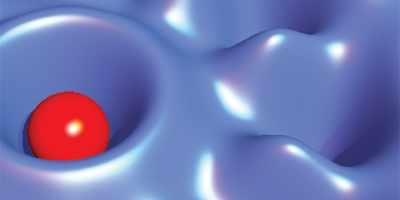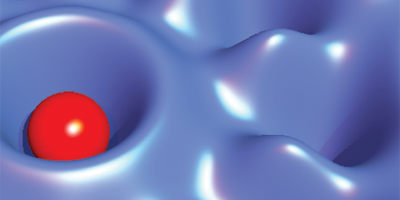Phasons Passing By
Although quasicrystals have long-range order, they lack a unit cell that repeats itself (see 7 October 2011 Focus). In addition to phonon vibrations that occur in regular crystals, quasicrystals exhibit low energy excitations called phasons – propagating patches of rearranged atomic structure. Phasons are of considerable interest because they contribute significantly to the thermal properties of quasicrystals, but the microscopic motion of atoms resulting from a phason propagating through a material hasn’t been clearly seen experimentally.
A model system for understanding phasons is a suspension of colloidal particles, which can be forced into a quasicrystalline order using special arrangements of lasers. Now, in a paper appearing in Physical Review Letters, Justus Kromer at the Berlin Institute of Technology, Germany, and colleagues report simulations that show what phasons should look like in such systems. According to the authors, the relative phases of the laser beams could be appropriately tuned to create a global phasonic drift—a change in potential that ripples through the quasicrystal and forces the particles to rearrange—and they predict the resulting discrete and collective motion of the particles. Kromer et al.’s results could be useful for understanding phasons in real quasicrystalline materials. – Sarma Kancharla





